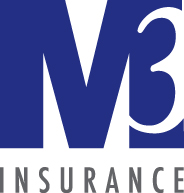Information
-
Client / Site
-
Audit Title
-
Document No.
-
Conducted on
-
Prepared by
-
Location
-
Personnel
Field Safety Paperwork
-
Daily Pre-use Inspection: Aerial Work Platform
-
-
Daily Pre-use Inspection: Skytrak
-
Daily Crew/Safety Huddle
-
Meeting Attendance: Safety/Toolbox Talks
-
Daily Safety Safety Field Checklist
-
Excavation Permit
-
Confined Space Hazard Assessment
-
Confined Space Permit
-
Ventilation & Air Sampling
-
Hot Work Permit
-
Scaffolding Inspection
-
Critical Lift Permit
Posters, Training, Communication
-
Site Board visible and current
-
OSHA Notice / 300 Log Posted As Necessary
-
Location of nearest Occupational Clinic
-
GHS Information Posted/Subcontractor SDS Information Collected
-
Safety Plan Posted
First Aid and Emergency
-
Stocked/Current First Aid Kit on-site
PPE
-
Hardhat, Safety Glasses, Proper Boots
-
FR Clothing
-
High Visibility Clothing as Required
-
Respiratory protection used as necessary
-
Hearing protection used as necessary
-
Other PPE being used when necessary(face protection; gloves; specialty equipment; etc.)
Fall Protection
-
Proper fall protection at 6' or greater
-
Inspection, selection, and use
-
Personnel below are protected from falling objects
-
Controlled access zones used
-
Warning lines 15' from edge
-
Is written plan available
-
Wall opening guarded
-
Open sided floors or platforms 6' or more from lower level equipped with proper guardrail
-
Floor openings 2" or more properly barricaded/protected/secured/marked/covered
-
Hoisting Operations: Guardrails in place/replaced after each load received; protection in place
Stairways and Ladders
-
All ladders in use are in good condition
-
Properly Secured
-
Necessary labels visible and legible
-
Straight ladders extend 3' above landing area
-
Step ladder properly used
-
Guard rails provided for stairway landing areas
-
Handrails provided for stairways with 4 or more risers
Scaffolding
-
Properly erected and supervised by competent person
-
Properly tagged
-
Fall protection/prevention used at 6' and above
-
Scaffolding tied to structure 30' horizontally and 20' vertically
-
Scaffolding plumb, cross bracing in place
-
Fully planked and toe boards in place
-
Plank spacing is 1" or less
-
Plank extends 6" or more (or) plank ends cleated
-
Base plates and mud sills used as necessary
-
Ladder access provided
Aerial Lifts
-
Proper Use
-
Operator/User certification
-
Fall Protection required?
-
Has equipment been inspected, appropriately selected, and worn correctly?
Concrete and Masonry
-
Safe hoisting equipment
-
Masonry walls over 8' braced if required/applicable
-
Limited Access Zone established (height of wall >=4')
-
All protruded rebar guarded
Excavations
-
Competent person on-site
-
Daily/change in conditions competent person inspection documented (Excavation Work Permit)
-
Was one-call system contacted
-
Holes, trenches, excavations, etc. are identified and protected
-
Surface encumbrances protected/supported
-
Ladder or ramp within 25' of all employees in trenches 4' or greater in depth
-
Utilities protected/supported
-
Spoil piles minimum of 2' from edge of excavation
-
Overhead power lines minimum distance of 10'
Motor Vehicles and Heavy Equipment
-
Horn and backup alarm operable
-
Seat belts used
-
Job traffic / Speed controlled
-
Adequate signage for safe travel
-
Inspected and charged fire extinguisher on equipment
-
Weights and loads controlled
Cranes, Rigging, Signal Person
-
Certified and Qualified Crane Operator
-
Critical Lift Permit used as necessary
-
Lift Director on-site
-
Swing Radius Controlled
-
Power lines deactivated, removed, protected, or safe distance
-
Qualified Rigger/Signal Person
-
Rigging Inspection by competent person prior to use
-
Rigging Inspection Log maintained
Confined Space
-
Declared Permit or non-permit
-
Rescue Plan communicated and understood
-
Air monitor on site (properly calibrated, properly used)
-
Atmosphere test results documented
-
Energy sources locked out/tagged out
-
Adequate ventilation
Hot Work
-
Hot-work permit completed/posted
-
Welding screens provided
-
Fire extinguisher present
-
Proper additional PPE provided
-
Equipment in good repair, insulators, grounding, welding leads
-
Adequate ventilation or respirator utilized
-
Fire watch provided 30 minutes post work
Cylinders
-
Compressed gas cylinders stored and secured upright
-
Empty gas cylinders marked
-
Stored properly
-
Cylinders capped
Fire Protection & Prevention
-
1 fire extinguisher/3000sqft
-
Fire extinguisher within 50' of flammable liquids
-
Bulk fuel - labeled, grounded, and stored >25' from construction operations
-
Approved metal safety containers for gasoline and diesel
-
Flammable and explosive materials stored and handled safely
-
Required number of fire extinguishers are inspected and tagged
-
All vehicles & other mobile equipment provided with fire extinguisher
Electrical
-
All electrical tools, cords, and equipment connected to GFCI
-
All electrical equipment in good condition
-
Lighting cords and wiring secured with NON-conductive material
-
Power tools are protected with GFCI or internal grounding
-
Pinch/drive-over hazards eliminated
-
Terminal boxes properly covered
-
Exposed light bulbs equipped with protective cage and bulbs in place
-
Good work practices (cords out of pathways, kept out of water, etc.)
-
Adequate Arc Flash Protection
-
Arc Flash Equipment inspected and in good condition
Hand and Power Tools
-
Guards in place
-
Safe work practices
-
Stored safely
-
Maintained properly and in good condition
-
Correct tool used/used for intended purpose
Silica Exposure Control
-
Table 1 controls fully and properly implemented
-
Equipment inspected and in good condition
-
Filters changed as necessary
-
Proper respiratory protection as necessary
Housekeeping
-
Clean and organized work trailers
-
Trash picked up and disposed of regularly
-
Walkways and passageways clear
-
Portable toilets/handwashing stations - adequate, cleaned, and serviced
-
Work areas neat and organized
-
No projecting nails/screws
-
Material stored in orderly and safe manner
-
Potable water available
Other items found
Positive Insight
-
Comments
-
Safety Representative
-
Superintendent
-
Foreman






